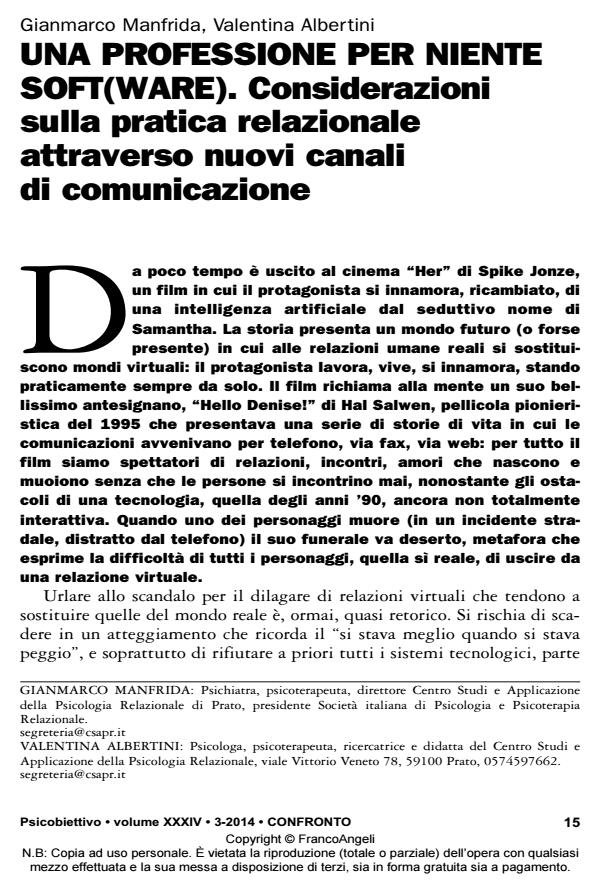Not a soft(ware) profession at all! Some thoughts on the systemic relational psychotherapy and web communication
Journal title PSICOBIETTIVO
Author/s Gianmarco Manfrida, Valentina Albertini
Publishing Year 2015 Issue 2014/3
Language Italian Pages 18 P. 15-32 File size 119 KB
DOI 10.3280/PSOB2014-003002
DOI is like a bar code for intellectual property: to have more infomation
click here
Below, you can see the article first page
If you want to buy this article in PDF format, you can do it, following the instructions to buy download credits

FrancoAngeli is member of Publishers International Linking Association, Inc (PILA), a not-for-profit association which run the CrossRef service enabling links to and from online scholarly content.
Telephone, e-mail, text messages are some tools therapists use in order to communicate with patients. For systemic therapists even long distance communication implies a level of relationship in which relational and emotional elements also find expression. Technology can be an ally and therapists should use it in a professional and conscious way but the idea of building up a therapeutic setting entirely online, on the contrary, is dangerous: there is a risk of depersonalizing and disqualifying a process of care which, to be effective, needs a strong and specific personal relationship implying face-to-face contact.
Keywords: Online Psychotherapy; Relational Systemic Approach Online; Text Messages and Psychotherapy; E-mail and Psychotherapy; Clinical Case Online; Future of Psychotherapy.
- Connected: Recommendations and Techniques in Order to Employ Internet Tools for the Enhancement of Online Therapeutic Relationships. Experiences from Italy Gianmarco Manfrida, Valentina Albertini, Erica Eisenberg, in Contemporary Family Therapy /2017 pp.314
DOI: 10.1007/s10591-017-9439-5
Gianmarco Manfrida, Valentina Albertini, Una professione per niente soft(ware). Considerazioni sulla pratica relazionale attraverso nuovi canali di comunicazione in "PSICOBIETTIVO" 3/2014, pp 15-32, DOI: 10.3280/PSOB2014-003002